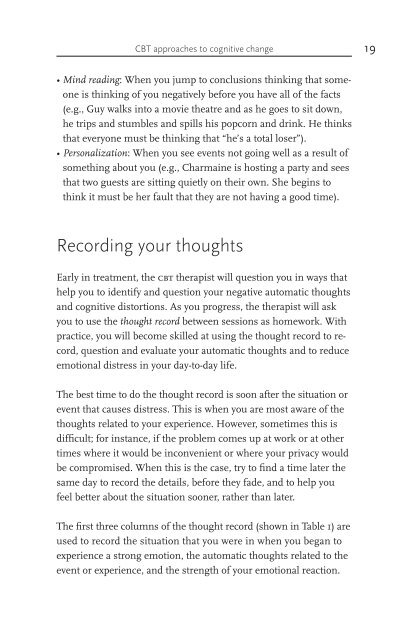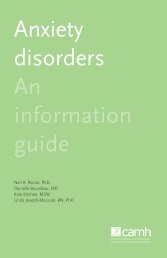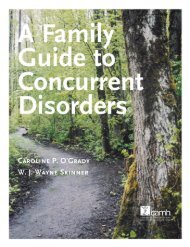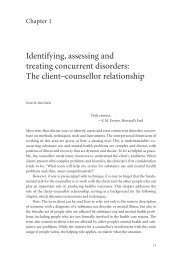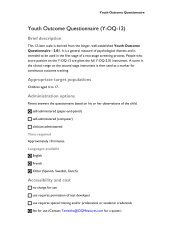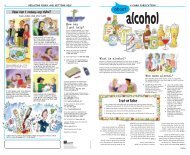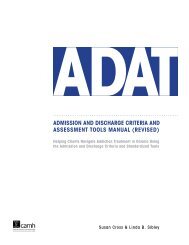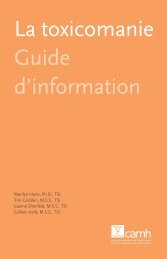Cognitive-behavioural therapy: An information guide - CAMH ...
Cognitive-behavioural therapy: An information guide - CAMH ...
Cognitive-behavioural therapy: An information guide - CAMH ...
You also want an ePaper? Increase the reach of your titles
YUMPU automatically turns print PDFs into web optimized ePapers that Google loves.
CBT approaches to cognitive change<br />
19<br />
• Mind reading: When you jump to conclusions thinking that someone<br />
is thinking of you negatively before you have all of the facts<br />
(e.g., Guy walks into a movie theatre and as he goes to sit down,<br />
he trips and stumbles and spills his popcorn and drink. He thinks<br />
that everyone must be thinking that “he’s a total loser”).<br />
• Personalization: When you see events not going well as a result of<br />
something about you (e.g., Charmaine is hosting a party and sees<br />
that two guests are sitting quietly on their own. She begins to<br />
think it must be her fault that they are not having a good time).<br />
Recording your thoughts<br />
Early in treatment, the cbt therapist will question you in ways that<br />
help you to identify and question your negative automatic thoughts<br />
and cognitive distortions. As you progress, the therapist will ask<br />
you to use the thought record between sessions as homework. With<br />
practice, you will become skilled at using the thought record to record,<br />
question and evaluate your automatic thoughts and to reduce<br />
emotional distress in your day-to-day life.<br />
The best time to do the thought record is soon after the situation or<br />
event that causes distress. This is when you are most aware of the<br />
thoughts related to your experience. However, sometimes this is<br />
difficult; for instance, if the problem comes up at work or at other<br />
times where it would be inconvenient or where your privacy would<br />
be compromised. When this is the case, try to find a time later the<br />
same day to record the details, before they fade, and to help you<br />
feel better about the situation sooner, rather than later.<br />
The first three columns of the thought record (shown in Table 1) are<br />
used to record the situation that you were in when you began to<br />
experience a strong emotion, the automatic thoughts related to the<br />
event or experience, and the strength of your emotional reaction.


